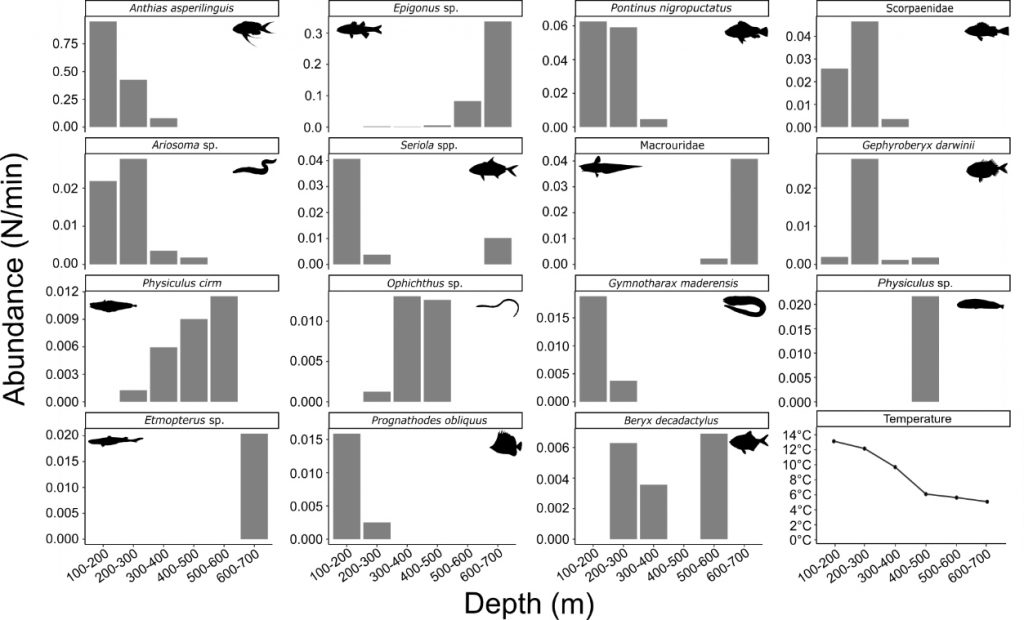New results – Reef fish communities in the deep reefs of São Pedro and São Paulo Archipelago (0º55.01’ N; 29º20.76´ W), Brazil
2022, January
Photos of the Alucia expedition taken by the DR and Nadir submersibles in the São Pedro and São Paulo Archipelago. (A) Tosanoides aphrodite, (B) Hexanchus griseus, (C) Anthias asperilinguis, (D) Physiculus sp., (E) Coelorinchus sp. and (F) Gymnothorax maderensis with a bottle beside.
PELD ILOC is part of the Brazilian Long-Term Ecological program since 2012, and is focused on monitoring shallow reef communities in the four Brazilian oceanic islands (https://peldiloc.sites.ufsc.br/). Additionally, the project actively collaborates in research exploring the mesophotic reefs of those islands.
In this sense, in 2017, the PELD ILOC joined the expedition aboard the American research vessel MV Alucia in partnership with researchers from the Woods Hole Oceanographic Institution (WHOI, USA), the Universidade Federal Fluminense (UFF, Brazil), the Universidade Federal da Paraíba (UFPB, Brazil) and the California Academy of Sciences (USA). The main goal of this expedition was to look for white fumaroles in the São Pedro and São Paulo Archipelago. Secondarily, images captured by the DeepRover 2 (DR) and Nadir submersibles around the Archipelago, allowed the unprecedented survey of the local deep reef ichthyofauna. The investigation of these fishes has been developed as an undergrad monograph by Cezar De Araujo (UFF), under the supervision of Dr. Carlos E. L. Ferreira (UFF) and Dr. Hudson T. Pinheiro (CEBIMar, USP).
Fish counts and identification were possible by time lapse photos analyse from cameras installed in the two different submersibles performing transects from 100 to 700 meters. The identification of 1,924 individuals (belonging to 32 species, 15 orders and 23 families) revealed a fish community very distinct from the shallow reefs at this site. The data showed a decrease in the abundance and richness of species with increasing depth. Benthic mesophotic planktivores were significantly dominant up to 400 meters deep (e.g., Anthias asperilinguis), with a clear change to macro-carnivores at greater depths (e.g., Physiculus sp.). Many species had their known depth range extended, as the endemic butterflyfish Prognathodes obliquus, to up to 300 m deep. This work contributed to the understanding of the community structure of reef fishes from deep environments of the ASPSP, and highlighting many of the impacts detected (e.g., anthropogenic debris) and the vulnerability of this unique fish species.

Relative abundance of dominant fish families and species along depth and temperature gradients in deep reefs of the São Pedro and São Paulo Archipelago. N/m = total number of fish scaled with bottom time in every 100 meters.
